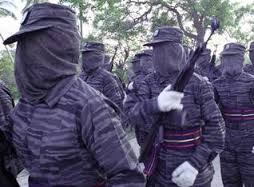 Introduction This report provides an historical overview of arguably one of the most sophisticated non-state armed groups ever assembled, the Liberation Tigers of Tamil Eelam (LTTE). Based in the north-east of Sri Lanka (formerly Ceylon), the LTTE established a complex, yet highly structured military wing accompanied by a supporting political wing and international network. This report charts the development of each of these component parts (military, political, and international), from the LTTE’s inception in 1976 to its defeat in May 2009, with particular emphasis given to the post-2002 era.
Introduction This report provides an historical overview of arguably one of the most sophisticated non-state armed groups ever assembled, the Liberation Tigers of Tamil Eelam (LTTE). Based in the north-east of Sri Lanka (formerly Ceylon), the LTTE established a complex, yet highly structured military wing accompanied by a supporting political wing and international network. This report charts the development of each of these component parts (military, political, and international), from the LTTE’s inception in 1976 to its defeat in May 2009, with particular emphasis given to the post-2002 era.
To fully understand the institutional development of the LTTE, it is often necessary to grasp how the dynamics of armed conflict in Sri Lanka prompted the LTTE to evolve and change. Consequently, rather than divorcing the LTTE’s institutional development from its historical context, in this report, both are presented side by side.1 The analysis begins with some background remarks on the Sinhalese and Tamil communities in Sri Lanka and the rise of inter-communal conflict which led to the emergence of the LTTE.2 The report then moves on to examine the institutional set up of the LTTE’s military wing, political wing, and international network.3 While this discussion provides a detailed overview of the LTTE’s key organizational structures at home and abroad, the final section of this report examines how these military and political structures were dismantled and destroyed in a series of final battles waged between the LTTE and the Sri Lankan Army (SLA).4 This concluding section also discusses the breakaway LTTE faction known as the “Karuna group,” and the continued survival of the LTTE’s international network.
The information contained within the following pages draws from a thorough review of the academic and policy literature on Sri Lanka, articles retrieved from Tamil websites and the Sri Lankan and Indian press, confidential embassy cables, and the Jane’s Intelligence Review. It should be noted however, that these sources – and the sources on which these sources rely – are not always impartial (see Annex 1 for a brief discussion of this point). Commentators on both sides of the conflict have often written about the LTTE in a way which favours their own viewpoints and allegiances, selectively omitting or misrepresenting certain facts while including others.5 In addition, because north-eastern Sri Lanka was often closed to outsiders during periods of armed conflict, the historical record of the LTTE not only contains certain biases but is also sometimes incomplete, particularly prior to the 2002 ceasefire.

